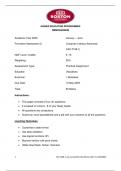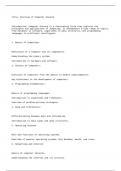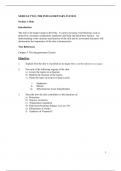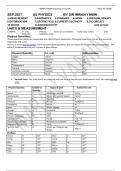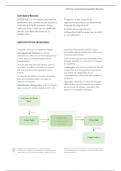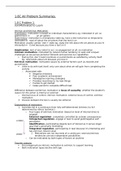Table of Contents
Introduction.......................................................................................................................2
Laboratory: workplace/educational setting........................................................................2
Laboratory information management system....................................................................2
Traceability........................................................................................................................3
Laboratory work: records...................................................................................................4
Unique identification number.......................................................................................................4
Result sheets.................................................................................................................................4
Analysis records............................................................................................................................5
Analysis reports............................................................................................................................5
Booking in a sample......................................................................................................................6
Reporting scientifically: satisfying customer needs.......................................................................6
Scientific organisation: communicating information..........................................................6
Information used in organisations......................................................................................6
Communication channels.................................................................................................10
Storing science data in large data bases...........................................................................11
Uses of information from large databases........................................................................11
Storing and retrieving large quantities of data: advantages.............................................12
Bioinformatics: issues.......................................................................................................13
Using appropriate software effectively.............................................................................13
Bibliography.....................................................................................................................14
1
, Introduction
In this assignment, I'll examine and evaluate the methods that scientific
knowledge is maintained and communicated within corporations and
other outside organisations. Specifically, laboratories will be the subject of
this article. Information recoding methods utilised in laboratories,
specifically the laboratory at my school, are what I'll be looking at to start.
I'll be judging the validity of these procedures.
Laboratory: workplace/educational setting
In my school, teachers and laboratory technicians utilise an application
called Lab Logger to manage specific requests, processes, and to prepare
recording system. Teachers can ask the lab technicians for any equipment
they might require, such as stationery or equipment for a practical, by
using this specialised programme to communicate with them. This is
highly advantageous since it enables teachers to make plans ahead of
time, provides the technicians enough time to prepare the necessary
equipment, and keeps track of when other teachers are making requests.
In order for the laboratory technicians to prepare the proper solutions and
chemicals needed for any practicals, they too require a clear and precise
approach. Additionally, they need to pay attention to their stock while
they make these solutions and mixes. A Microsoft Excel Spreadsheet is
specifically how my school manages this. The documents must be
safeguarded, so a password has been provided to maintain a sense of
security. Most members of the scientific department, including teachers
and technicians, are the only ones who know this password. A three to
four month interval is used for password updates. It helps preserve
security and protection by routinely changing the password. The
document contains details on the stock and inventory of the school lab; it
is important because it enables the lab to keep track of the equipment,
which is helpful because, if any equipment breaks or runs out, the head of
the laboratory can update the document, order replacements, and
schedule a delivery date to allow for proper planning of the experiments.
The excel papers also have a function that tells the technicians who last
changed them, so they can plan their tests properly. Passwords and
tracking capabilities are necessary for traceability so that technicians can
be alerted to unauthorised modifications and identify the people who edit
the documents.
Laboratory information management system
A software program called LIMS, or Laboratory Information Management
System, makes it possible for lab operations to be efficient and effective.
Usually, it's utilised to address issues with automation, data control, and
other legal matters. To ensure an efficient workflow, whether it be for the
generation of reports or the gathering of samples, LIMS is used to
standardise all laboratory tasks and operations. To track compounds in a
laboratory, LIMS was initially employed as a system. Additionally, LIMS
supports billing, customer service, and test result management. The
electronic notebook and other laboratory data management tools have
2


